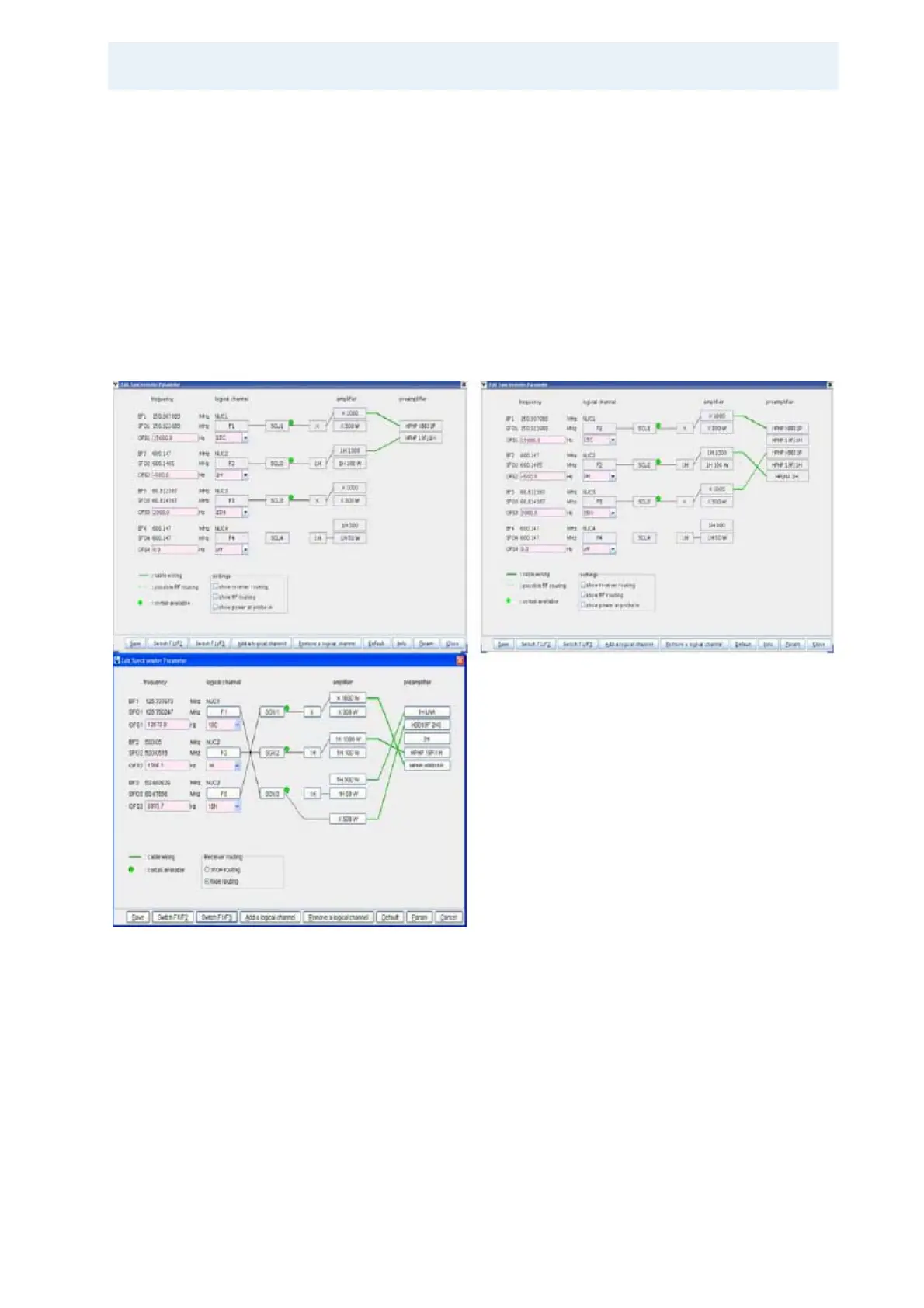Double-CP
User Manual Version 002 BRUKER BIOSPIN 257 (327)
3. Check the edasp routing and set up 3 RF channels for C, H and N, such that
the lower power amplifier (500W or less) is used for
13
C. (
15
N may require
more than 500W). Set for
13
C observation.
4. Make sure the preamplifiers in use are set up for the appropriate frequencies.
The following external RF filters are required: proton bandpass,
13
C bandpass,
and
15
N low pass. The channel isolation required between X and Y (here
13
C
and
15
N) is usually sufficient with a bandpass on one of the channels, but a fil-
ter to remove the proton decoupling RF interference is required for X and Y.
This means that one of the band pass filters on X or Y may be replaced by a
proton reject, X low pass filter. If the channel isolation between X and Y is not
adequate, the probe cannot be tuned.
Figure 20.2. The edasp routing tables for H-C-N double CP.
Three examples are shown: Setup with only one X-HP-preamplifier (must be reca-
bled for
13
C and
15
N setup), setup with 2 X-BB HP-preamplifiers and 2 HP trans-
mitter, and setup with one HP transmitter and one 500W transmitter. The higher
frequency nucleus is set for the lower power amplifier.
5. Set up for standard
13
C CP operation in triple mode. Remember that a double
tuned probe has better signal to noise and requires less power on X than a tri-
ple probe.
